India is a land of deep spiritual significance. Its numerous temples become timeless monuments that reflect not only the religiosity of the ancient civilization, but also its architectural genius. Some temples are thousands of years old and have their own history and culture reflected in art. It becomes a peek into the history of India. The most ancient temples in India, from grand North Indian structures to South Indian marvels, await exploration, scattered like treasures across the land.
In this article, we will discuss journeys through time related to India’s most ancient temples in the course of their history and architecture, particularly focusing on the stunning temples of South India, whose unique character owes much to their glorious Dravidian feature.
The Sacred Mission of Kashi Vishwanath Temple, Varanasi
- Place: Varanasi, Uttar Pradesh
- Dedication: Lord Shiva
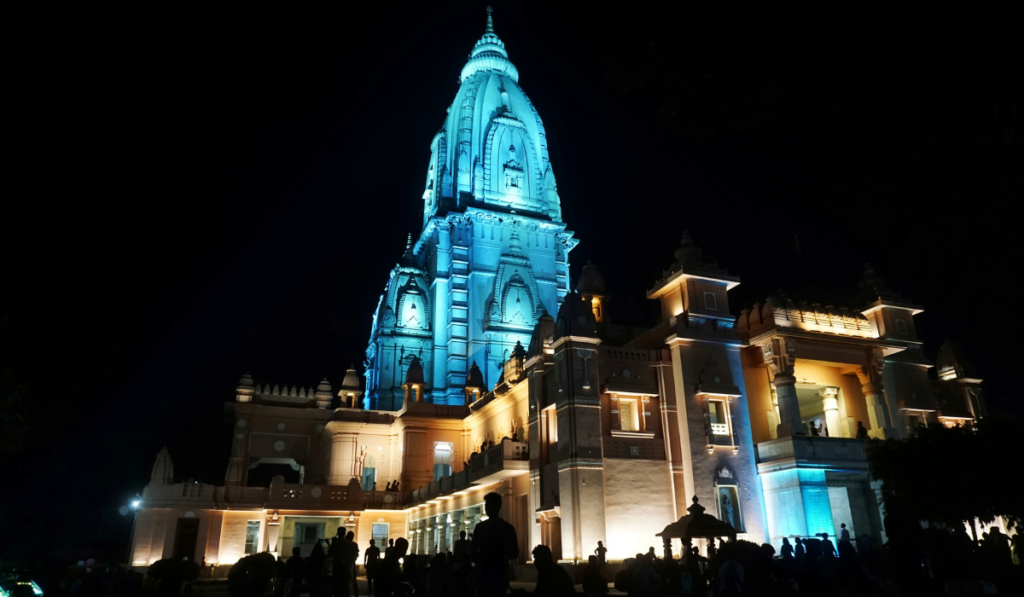
Kashi Vishwanath Temple goes under one of the most sanctified temples in India, under the headship of Lord Shiva. It has been scarred on bank of Ganges for more than 2,000 years, a testimony to one among the oldest and the most revered religious sites in Hinduism. Millions of pilgrims come to this temple of Lord like Varanasi for millions of purposes, mostly being blessed or soaking the divine atmosphere of the Ganges yearly. Such an ancient temple might have been rebuilt many times but still serves as a major pilgrim destination.
Benefit of Visiting:
- Spiritual Purification: The river Ganges washes away sins and provides realizing spirit to temple-waves bringing in inner peace.
- Mental Peace: Being in the holy city gives some respite from the stress and anxiety, allowing for a moment of indulging in introspection.
Brihadeeswarar Temple, Thanjavur: A Monument of Grandeur.
- Location: Thanjavur, Tamil Nadu
- Dedication: Lord Shiva
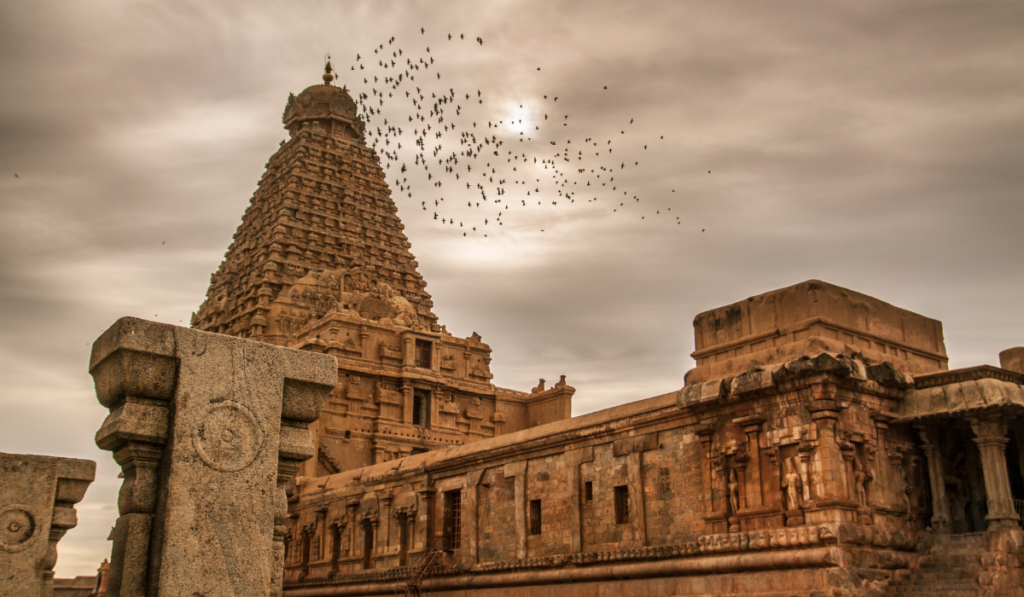
The whistle-blowing, Grea Temple, Brihadeeswarar Temple, has stood magnificent for over a thousand years. King Rajaraja Chola I envisioned this impressive architectural marvel in the 11th century. The great Dravidian architecture was at its best demonstrated in its construction. The dome weighed 80 tons, serving as a sample of how advanced engineering skills were of the Cholas. Additional properties of this famous temple include its large and spectacular interior, as well as its exquisite sculptures, making it one among the largest temples in India.
Benefits of Visiting:
- Cultural enrichment: The beautifully carved temple in that building-an intricate architecture holds a connection with India’s vast historical past.
- Spiritual upliftment: Entering the temple inspires many spiritually, especially those under the influence of Lord Shiva’s blessings.
Meenakshi Temple, Madurai
- Location: Madurai, Tamil Nadu.
- Dedication: Goddess Meenakshi and Lord Sundareswarar (Shiva)
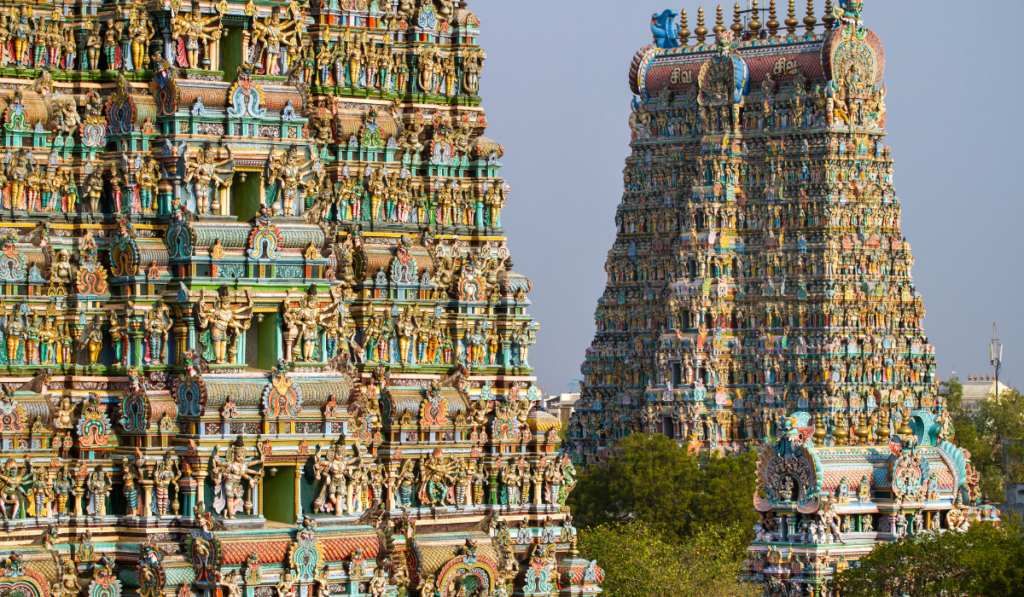
Madurai’s Meenakshi Temple is one of the best illustrations of Dravidian architecture: Its detailed sculptures, colorful gopurams, and elaborate mythology that surrounds them would make it remarkable. Built in the 6th century, it was dedicated to Goddess Meenakshi (Parvati) and her husband Lord Sundareswarar (Shiva). The temple complex is enjoyed by pilgrims and tourists as a hallmark of the perfect fusion of faith and art, which this temple offers. The grand Chithirai Festival at this temple has gathered tourists’ attraction across the globe.
Benefits of Visiting:
- Enhanced Concentration: The quiet environment enhances clear thinking.
- Healing Energy: The temple is believed to have positive vibrations, offering emotional healing and restoring mental balance.
Somnath Temple, Prabhas Patan: The Eternal Jyotirlinga
- Place: Prabhas Patan, Gujarat
- Dedication: Lord Shiva
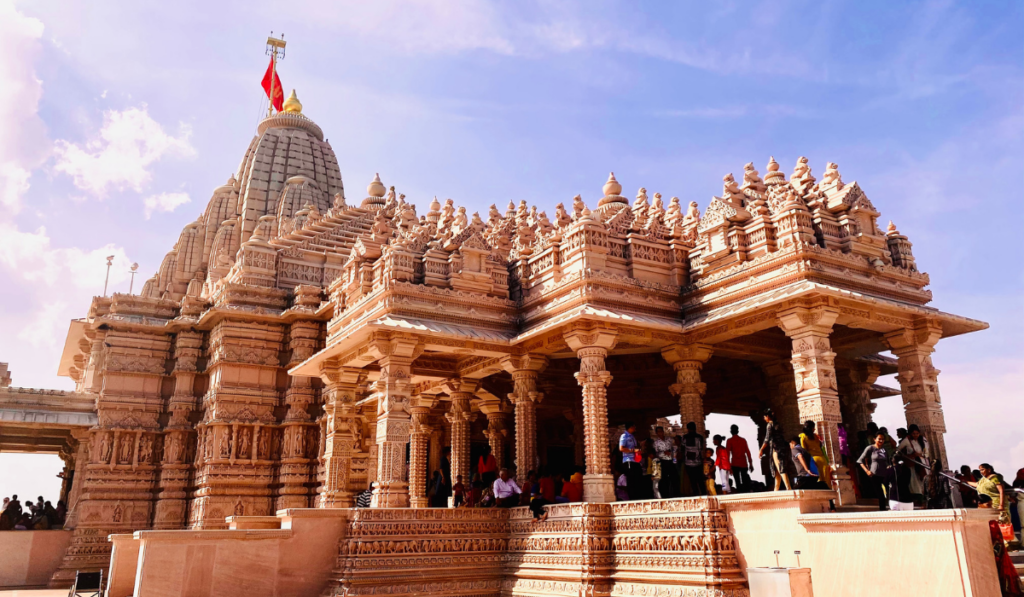
The Somnath Temple is one of the 12 Jyotirlingas. These are the holiest shrines of Lord Shiva and play a significant role in Hindu religion mythology. The current edifice, reconstructed in the 1950s, has remained an edifice of endurance and dedication.
Benefits of Visiting:
- Physical Rejuvenation: Ocean air and the calmness of surroundings create a feeling of rejuvenation.
- Cleansing of Mind and Soul: A visit to Jyotirlinga such as Somnath is considered to purify one’s mind and soul and to grant divine peace.
Konark Sun Temple: The Chariot of the Sun God
- Location: Konark, Odisha
- Dedication: Surya (Sun God)
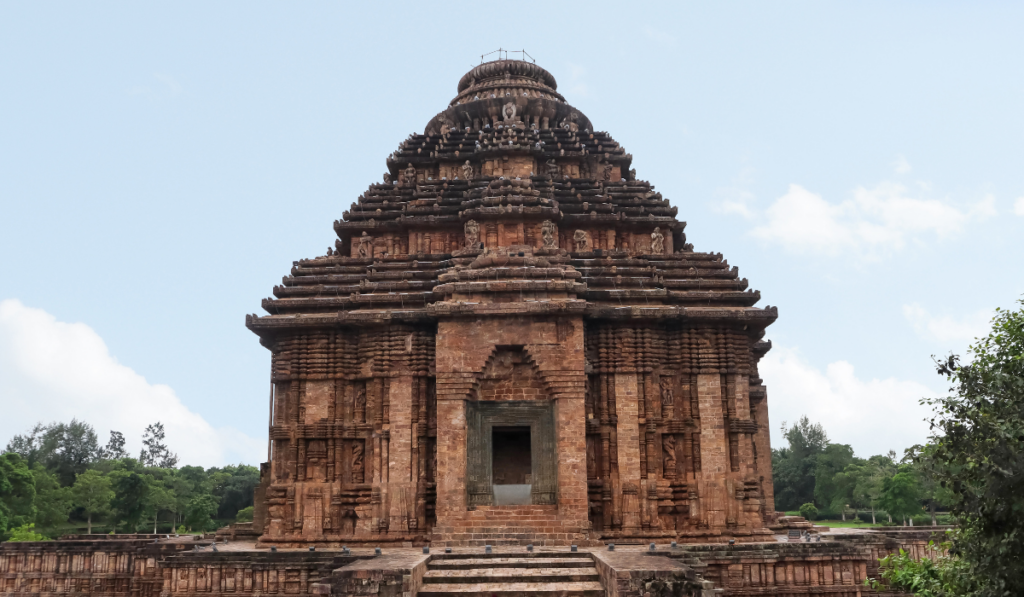
It was designed as a giant chariot with twelve wheels to represent the twelve months of the year. This symbolizes the greatness of the art that was upraised in ancient Indian engineering and artistry. It is a UNESCO World Heritage site and, thus, brings thousands of visitors across the globe.
Benefits of Visiting:
- Increased Energy: Since this is a Sun temple, most devotees feel refreshed and energized after their visit.
- Introspection: The beauty of architecture brings one to introspection and provides focus and clarity.
Ancient Temples of South India: The Heart of Devotion and Architecture
The temples of South India are endowed with the distinct temple culture which talks of towering gopurams, beautifully carved sculptures, and layered meanings. From Shaivite temples to those of Vaishnavism, temples here embody the diversity present within Hinduism. Here, we mention some temples, ancient but among the most important in South India, that can still send shivers down your spine.
Ranganathaswamy Temple, Srirangam: The Jewel of Vaishnavism
- Location: Srirangam, Tamil Nadu
- Dedication: Lord Vishnu
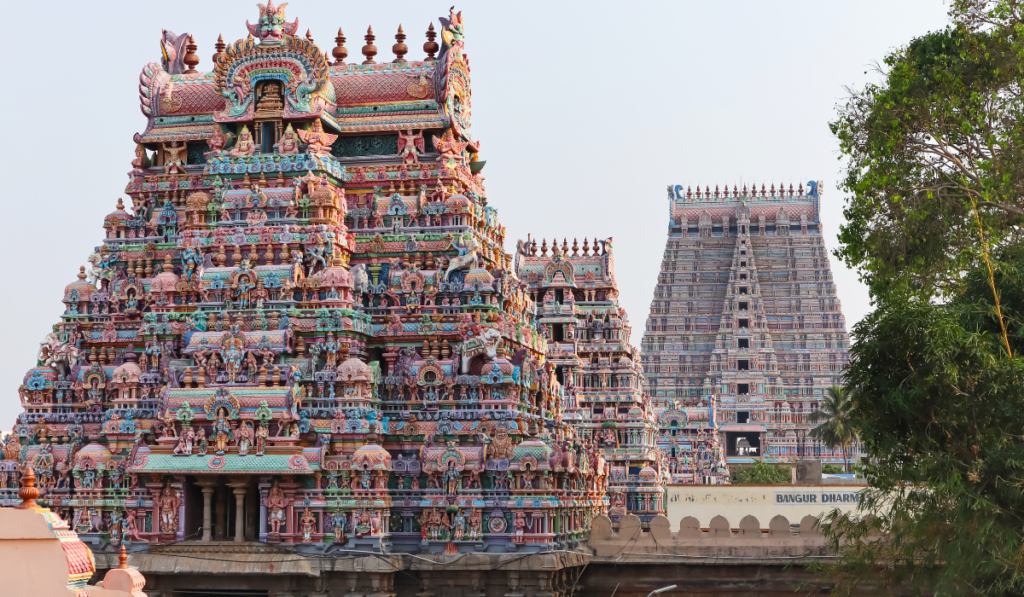
The Ranganathaswamy Temple in Srirangam is one of the largest temples in India still functioning and a prominent Vaishnava pilgrimage center. The temple is dedicated to Lord Vishnu and started its construction during the 10th century. Massive in structure, adorned with beautiful gopurams and artistic works, the temple is unparalleled in its prestige compared to the other temples in the 108 Divya Desams (shrines to Lord Vishnu). This particular shrine draws countless devotees each year for the festival of Vaikuntha Ekadashi.
Benefits of Visiting:
- Spiritual Calmness: The place provides calmness, which aids in enlightenment while minimizing stress and tension.
- Mental Clarity: Visitors enjoy a lingering inner peace from the backdrop of carvings and active religious activity within.
Annamalaiyar Temple, Thiruvannamalai: Abode of the Sacred Shiva
- Location: Thiruvannamalai, Tamil Nadu
- Dedication: Lord Shiva (Annamalaiyar)
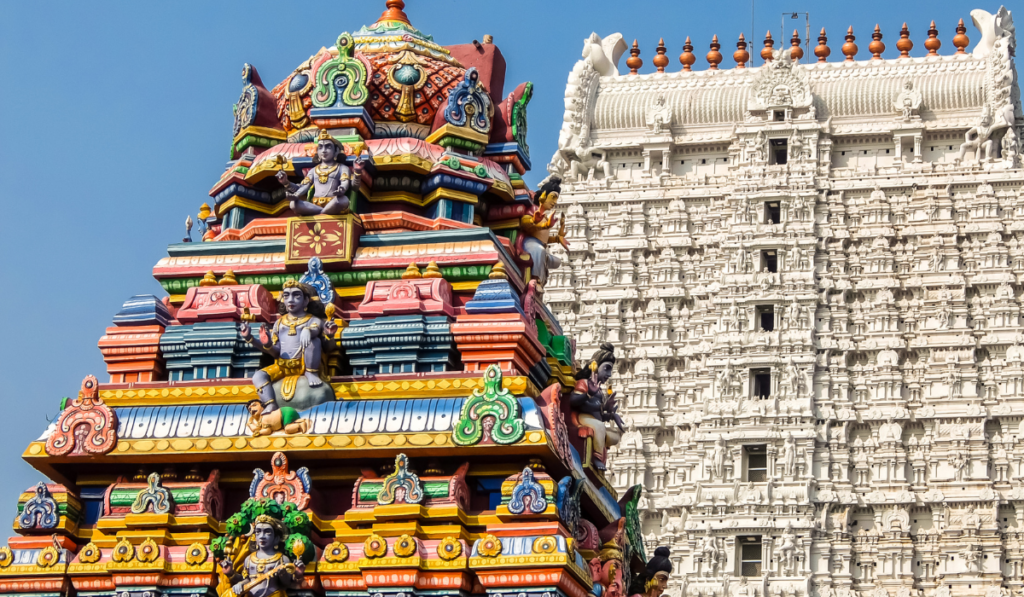
Lying at the foot of the sacred Annamalai Hill, south India has one temple called the Annamalaiyar Temple. Dated towards the 9th century, this temple was dedicated to Lord Shiva worshipped here as Annamalaiyar. It is blessed with splendid gopurams, particularly the Rajagopuram, towering to a height of 66 meters. It becomes an ancient pilgrimage site during the Karthigai Deepam festival, where people usually climb Annamalai hill as part of their spiritual journey.
Benefits of Visiting:
- Body Detoxification: The circumambulation around the hill may cause a form of physical and spiritual cleansing.
- Spiritual Cleansing: The temple atmosphere promotes meditation at a deeper level and allows calmness to set into the person’s being.
Kailasanathar Temple, Kanchipuram: A Timeless Pallava Masterpiece
- Location: Kanchipuram, Tamil Nadu
- Dedication: Lord Shiva
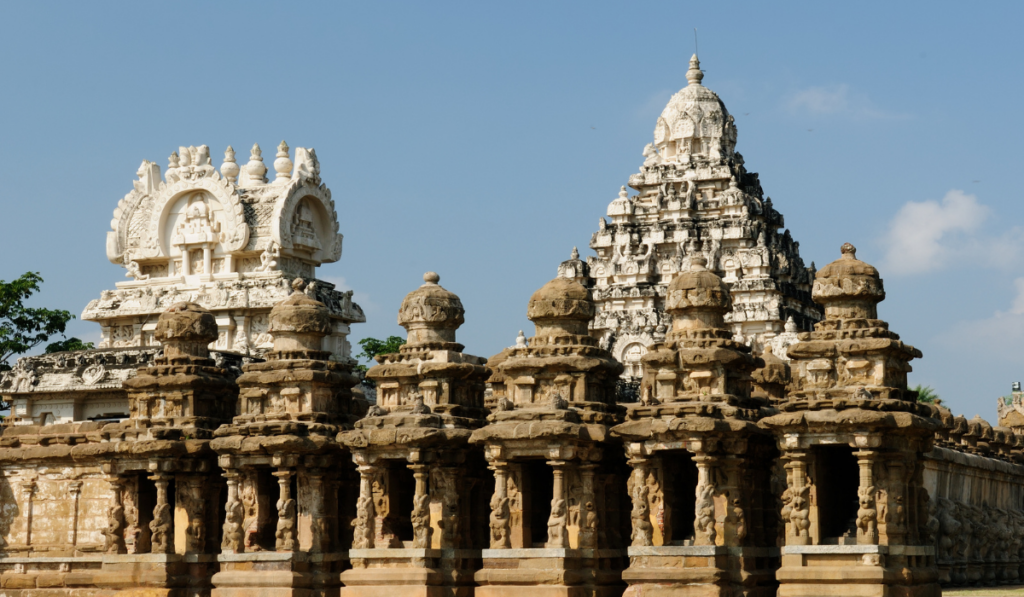
One of the oldest temples of South India, the Kailasanathar Temple in Kanchipuram has its origin within the Pallava dynasty dating to the 7th century. The temple is dedicated to the worship of Lord Shiva, popular for its serene architecture and polished stone carvings. Comparatively simpler in structural disposition than the later constructed Dravidian temples, it stands as an earlied Pallava architectural development that inspired subsequent South Indian temples.
Benefits of Visiting:
- Mental Rejuvenation: The temple is set in serene surroundings offering mental relaxation away from the bustle of everyday life.
- Physical Healing: The temple is believed to act therapeutically for the body in the serene setting.
Chidambaram Nataraja Temple, Chidambaram: The Cosmic Dance of Shiva
- Location: Chidambaram, Tamil Nadu
- Dedication: Lord Shiva (Nataraja)

It is believed that Nataraja, the performer of the cosmic dance, danced at the place where the temple was built. Constructed in the 5th Century, the temple became one of the major Shaivite temples in India. Here played out the most famous mystery called Chidambara Rahasya, deifying the dancing form of Shiva as the symbol of cycles of creation and destruction. The temple is exclusive for its sparkling golden roof and its beautiful hall of 1,000 pillars.
Benefits of Visiting:
- Stress Relief: The temple has spiritual meanings within it relieving stress and anxiety for visitors creating an atmosphere of peace.
- Psychological Healing: The vibrations at the temple are said to be healing for a person suffering from possible grief and emotional distress.
Also Read : The Mystery of 7 Ancient Shiva Temples in India
Virupaksha Temple, Hampi: A Legacy of the Vijayanagara Empire
- Location: Hampi, Karnataka
- Dedication: Lord Shiva (Virupaksha)

The temple, dedicated to Lord Shiva, constitutes some of the most prominent temples in Hampi-Karnataka, under the Vijayanagara Empire. The temple could boast of an antiquity tracing from the 7th century and making up one of the oldest and most important religious centers in South India. An imposing architecture flaunting a lot of beautiful carvings and pillars is what the temple, known as Landmark in Culture and Religion, has to offer. Today, these ruins in Hampi attract people like a magnet to visiting some of the most historically and spiritually attractive places around and are also a UNESCO World Heritage site.
Benefits of Visiting:
- Cultural and Spiritual Enrichment: Visitors receive a good knowledge-related experience of ancient Indian culture, history, and spiritual practices.
- Restoration of Inner Peace: It is a place that, with its ambience, brings mindfulness and deep connection to the Divine.
Ideal Times to Visit Ancient Temples
India’s ancient temples can be best visited depending, on factors like weather, festivals, and the atmosphere you desire. Here’s a general guideline for visiting these temples:
October to March: The Best Times
- Weather: The time is best for temple hopping everywhere in India in this time. The effects of the scorching summer have gone and, practically immediately afterward, the green surroundings are fresh from the rain of the monsoon.
- Reason for Visit: Temple tourism is best in parts of the country, such as Tamil Nadu, Uttar Pradesh, and Odisha, where degrees remain moderate and perfect for delving into.
- Festivals: People visit temples in India during these months, as festivals like Makar Sankranti, Navratri, and Diwali are celebrated. Such fairs could only add a touch to the deeper spiritual bonding and bring an unforgettable experience.
April to June: The Summer Time
- Weather: The summer months in northern and central parts of India are sweating hot with burning suns, and there is a high possibility of that swelling heated skin as scorching temperatures may scale above 40 degrees Celsius (104 degrees Fahrenheit). However, it would not be as hot over here in the south where most states, Tamil Nadu and Kerala, enjoy some cool breeze coming from the shores.
- Why Visit: The heat can be scorching, but it is just worth visiting those hill stations or pilgrimage centers, such as the Kedarnath or Badrinath temples in Uttarakhand, since the charm is really fresh there. For solo pilgrims, one additional advantage of this time is that much fewer visitors are around, so now is the perfect time for quiet introspection and meditation.
- Special Tip: For temple visits, do it at dawn or dusk in order to avoid the heat at midday.
July – September: Rainy Season Monsoon
- Weather: The spell of a rainy season can be very heavy in the western coast areas as well as the central parts. Such heavy rainfalls often disturb arrangements for traveling to various places, yet at times, these rains give magical atmosphere around temples.
- Why visit: Anyone who appreciates the silent beauty of the monsoon will find this season the best. These places may promise an altogether different experience in quietness while visiting a temple in states like Kerala or Goa. The monsoon is soothing since there are not as many pilgrims traveling during this time of the year.
- Special Tip: Before making travel plans, domesticate yourself for rain and keep in check local weather conditions. This time is perfect for that user who is looking for privacy while reflecting in an isolated environment.
Conclusion
They have been places of faith, resilience, and artistry. Ancient temples of India are really a history of their own-from the imposing temples of the South to the revered shrines in the North. They only give an added spiritual connotation to one’s presence. These temples are places where one truly finds awe, appreciation, and reverence for the spirit of ancient Indian civilization that has come down through the ages.
FAQs
What is the significance of visiting ancient temples in India?
Visiting very ancient temples connects you to the rich cultural and spiritual heritage of India. These sacred spaces allow you to access divine blessings, mental peace, and reflection because they also house unimaginable architectural grandeur.
What are the best months to visit temples in India?
The best time for the visit is between October and March since this is when the weather is relatively cooler and comfortable. Additionally, this is when most festivals hold, creating a very lively environment for the spiritual experience.
Are there any health benefits of visiting temples?
Relaxation, mental clarity, and emotional well-being is enhanced by visiting temples. Slow walks around the temple or meditation can further enhance physical rejuvenation.
How can I ensure a spiritual experience while visiting these temples?
Find some quiet time in the morning to enhance your spiritual experience by praying and meditating. Understanding the temple’s history will add another layer to that connection.
Are temple festivals a good time to visit?
Yes, festivals in temples are quite colorful and their cultural experience is rare. They can be quite congested, but the people will have a chance to see some huge rituals and processions from close up.








